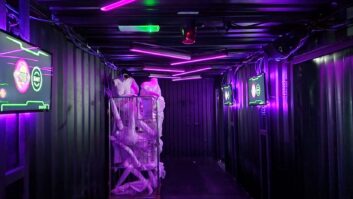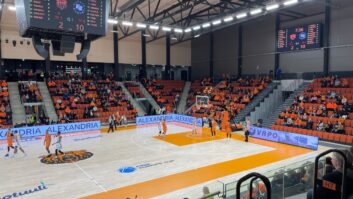
Daniel Borg, managing director of Electrosonic AB, highlights personalisation and visualisation as two key trends.
We have had the good fortune to work with the Swedish Transport Administration for the past eight years. Like any road traffic administration they collect, process and distribute data to everyone on the roads, and we deliver all the visual and user systems to support that.
Among the many changes we have seen during that time, perhaps the most significant is that the control room is becoming more personalised. Basically, the emphasis has shifted from large displays showing a lot of visual data to something that is closer to the operators.
This puts demands on the system topology, and also on the integrator, to make it more usable. The old control room walls are not gone entirely, but they are often complemented by smaller walls used either by individuals or by smaller groups with more specialist tasks in maintaining the traffic flow.
Generally we see that everyone recognises that control rooms are a great place to host critical functions; in Sweden a big change has taken place where all of the different government agencies have been separated, but we now see increasing interest from the municipality to be in the same control room as the road administration – and also interest from the police and any other agency that may like to use the data that is being collected.
The control room itself is not growing physically, so to fit these additional people into it we need to make the operator consoles a little smaller. At the same time there is more and more technology becoming available for the individual operator, so there is demand for much more integration – so they don’t have 14 or 15 buttons to press, or five or six systems to operate. Also the integration is becoming different, because most of the new systems being deployed are either virtualised or web-based – so it’s rather far away from classical AV as we know it.
Control rooms have always been very display driven. It’s been the dream of any screen manufacturer to get into a control room because they can sell a lot of displays, which will need to be replaced after a few years. If you can provide a good product and good service, you will probably have the business for a very long time.
We started at the Swedish Transport Administration with rear-projection cubes. There are only two reasons why that might change: first of all price, and second, space – which is becoming a scarce resource in the control room.
So what are our control room clients asking for? First of all, image size is key, especially if you’re watching a lot of camera images. In Stockholm we have three major tunnel systems where it’s extremely important that the image quality is perfect, especially for darker images. The size is determined by viewing distances classically.
There has also been a demand for greener technology. You can really see a difference between older display types and new, more power-efficient models.
Of course, reliability is essential as well. Compared with the screens we see today, my prediction is that we’re going to see something else that is even more reliable over a long period of time. The market will also move towards something that is longer lasting and will get rid of all the spaces between screens – even though they’re down to about 3.6mm or even less now. I’m thinking that technologies like LED can overcome the price barrier and also the image quality barrier.
Then we have the image distribution aspect. IP-based systems have made a huge impact – maybe not so much in traffic but in other kinds of control rooms that we have displayed in the Scandinavian market. It’s a huge opportunity but also a huge challenge for the integrator in making the systems user-friendly. IP parts are quite simple to understand for many clients – but the thing they may not understand is the impact it has on network infrastructure and the skillsets that they will need internally, and their suppliers and integrators will need, to ensure full functionality of these systems.
A final thing that is making life a bit more complicated and challenging is virtualising the sub-systems that we normally display on the walls, and displaying them on the operator stations. Different technology and different knowledge are needed to provide similar functionality to what came from analogue KVM back in the day. [I]
Daniel Borg is managing director of Electrosonic AB, based in Bromma near Stockholm. This article is based on his presentation to the transportation panel session at InstallMarket.







